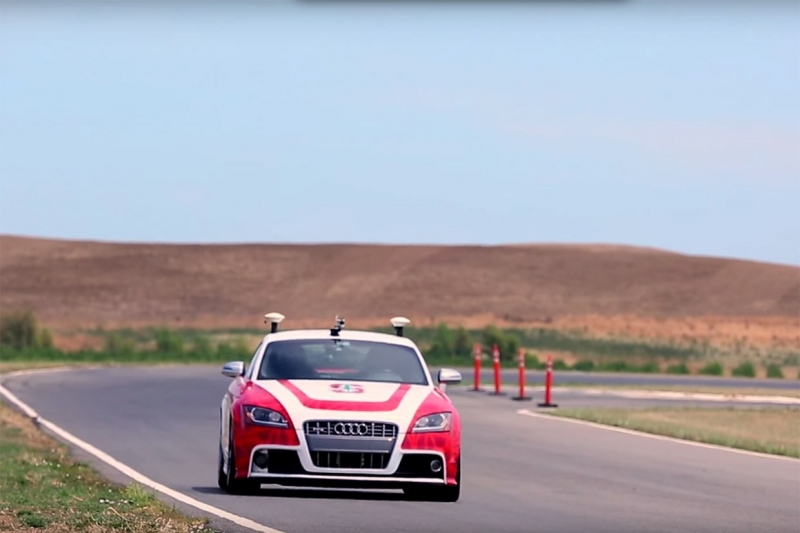Self-driving vehicles aren't known for going fast; Google's cars are limited to 25 mph, and one was even pulled over by a California police officer last year for driving too slowly. But this doesn't mean that they're unable to hit high speeds, as engineers from Stanford University proved with their 120 mph autonomous Audi.
Professor Chris Gerdes and his students have spent the past several years developing and improving the autonomous driving algorithms and sensors on a custom-rigged Audi TTS called Shelley.
"A race car driver can use all of a car's functionality to drive fast," says Gerdes. "We want to access that same functionality to make driving safer."
While the car has reached around 120 mph on faster sections of the course, the team keeps it around 50 mph to 75 mph - the speeds where accidents are most likely to happen.
By monitoring Shelley's speed, handling, g-force, braking, and tire friction on the 3-mile track, the team can use the data to improve automatic collision avoidance software, like the kind used in Google's upcoming autonomous vehicle.
The car can make it around the Thunderhill Raceway, located in Willows, California, almost as quickly as an experienced racer. The research has already resulted in several graduates going on to top jobs in the automotive industry.
Students are broke up into teams during race sessions, with each group performing a different type of research. "Once you get to the track, things can go differently from what you expect," Gerdes said. "So it's an excellent lesson of advanced planning, but also how to come together as a team and deal with changing priorities."
Hopefully, the work of Gerdes and his students will lead to the safer, and much faster, self-driving cars of the future. If you want to see Shelley in action, check out the video below.
